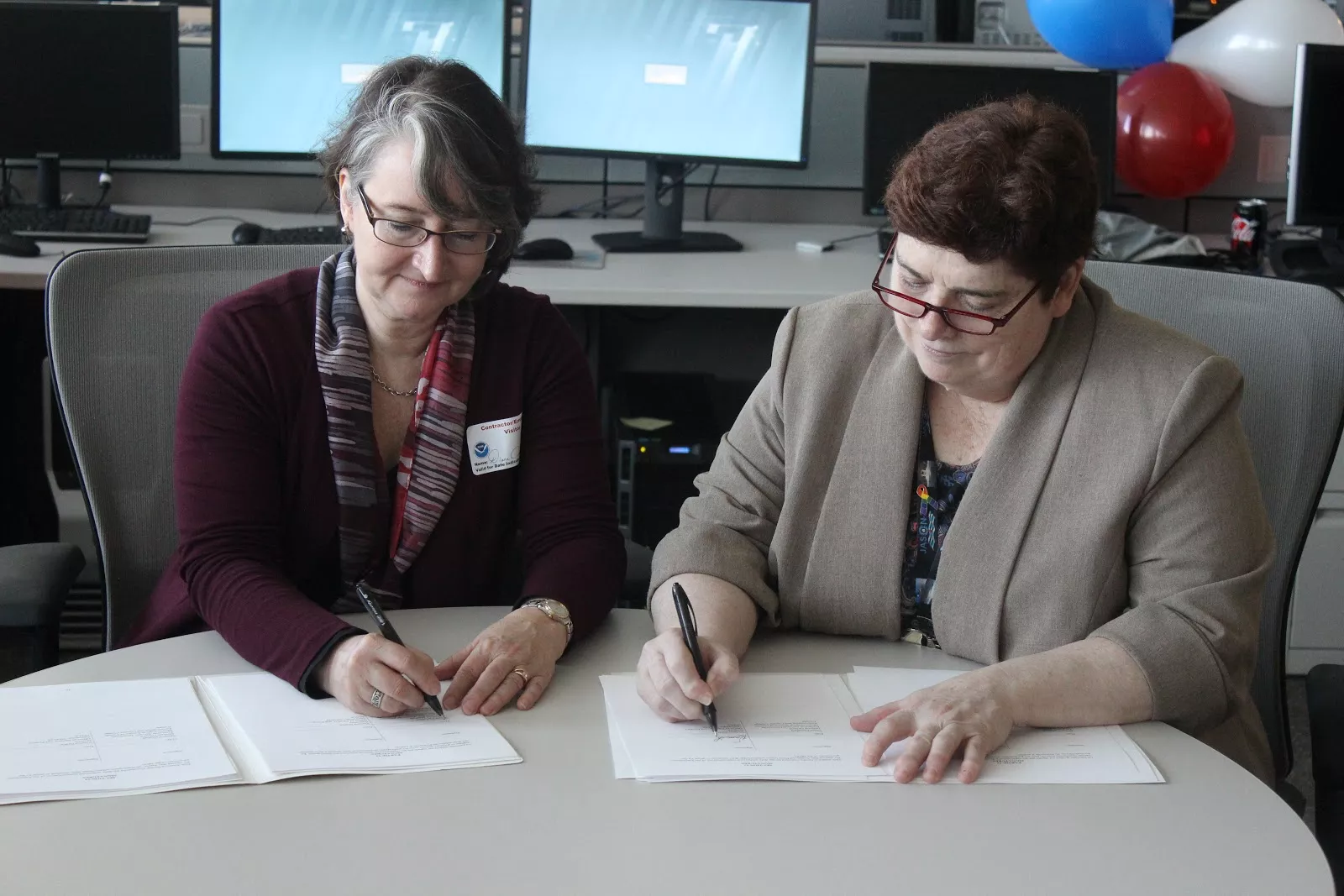NOAA and Environment Canada (EC) recently signed an agreement which provides for mutual assistance and sharing of satellite imagery in case of a large oil spill in U.S. or Canadian waters. Under the agreement, NOAA would draw on EC's experience in responding to oil spills in ice-infested waters and using specialized radar satellites, while EC would benefit from NOAA's expertise in monitoring oil thickness and using other imagery tools. Also, the agencies will exchange new techniques to get more and better information to first responders.

The United States and Canada share a border over 5,000 miles long. Some 1,538 miles (or roughly 28%) of which are shared with the State of Alaska alone. This shared boundary brings shared natural resources,interests, and the need to work together to protect our communities, wildlife, and environment from the risk of oil spills and other accidents.
Underpinning all of NOAA’s international activities is the bedrock principle of full, free, and open data sharing. Dating back to formation of the International Meteorological Organization in 1873, nations have recognized the importance of sharing environmental observation data for the development of lifesaving environmental and other disasters in neighboring nations.
NOAA has continued this tradition, providing its Earth observation data to the world at no cost.
